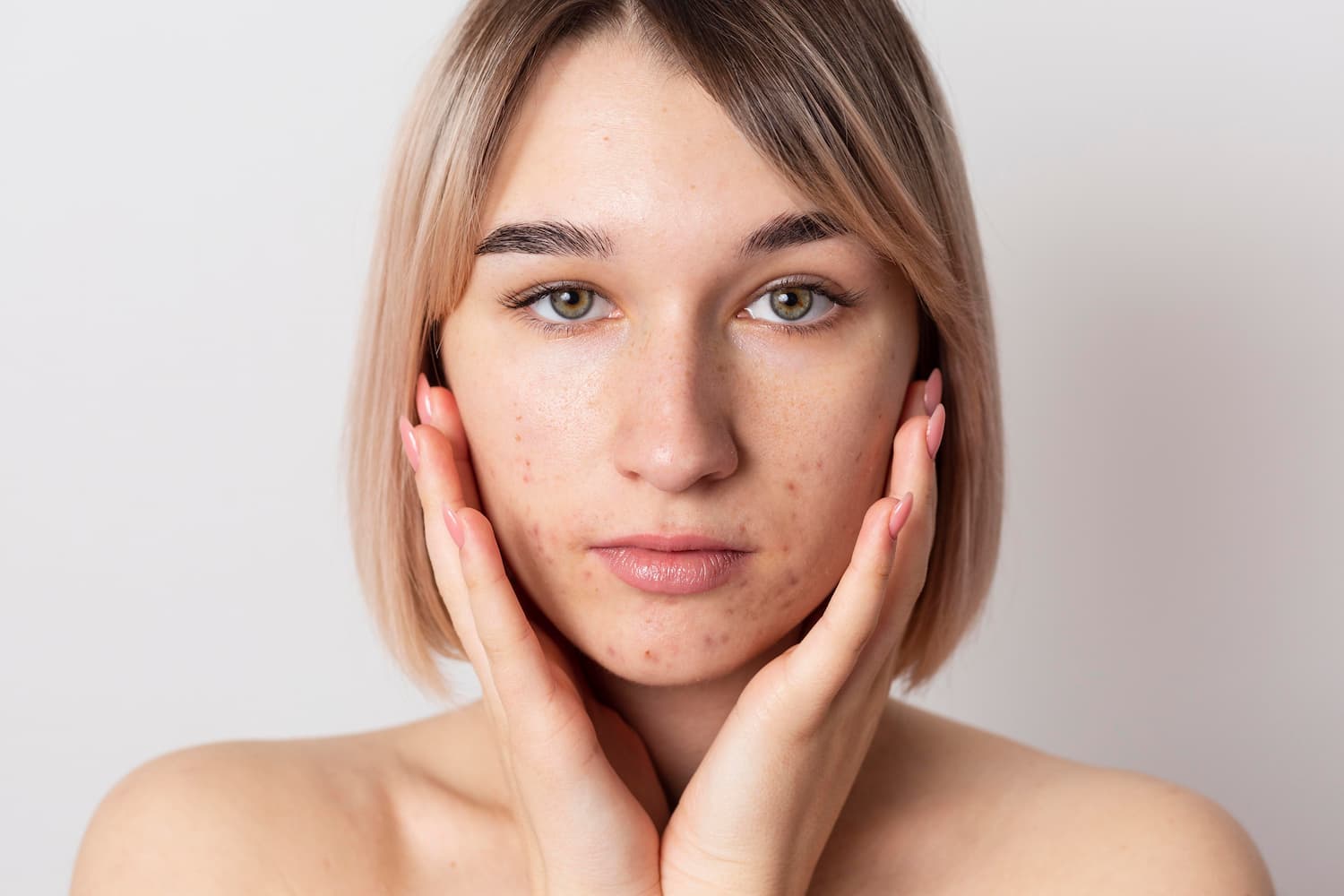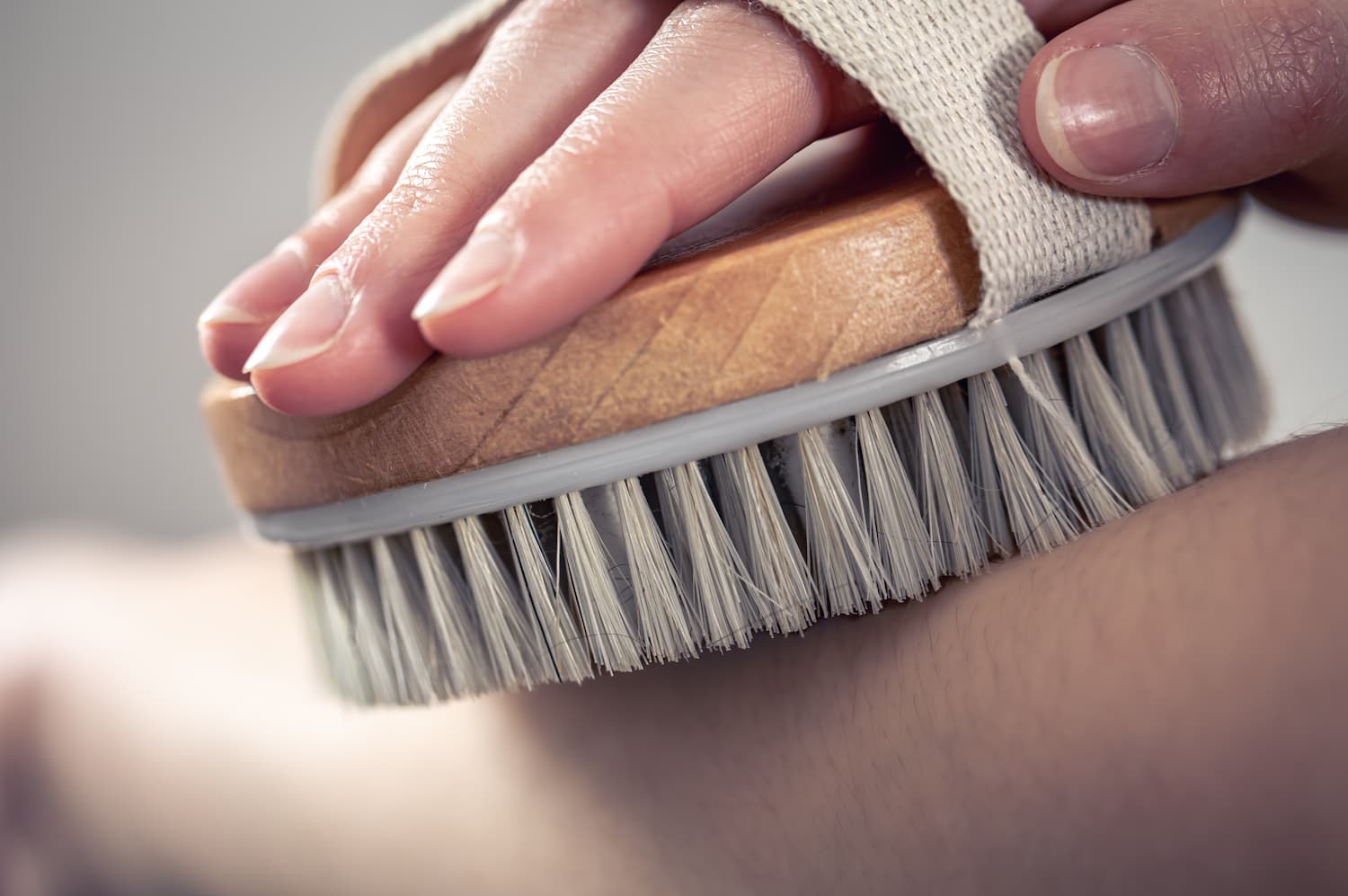Niacinamide: what it is, how it works, how to use it and what (not) to combine it with
Do you already use niacinamide products in your daily skincare routine? If not, it's time to start.


Learn more about our editorial process
.

Learn more about our editorial process
.

Learn more about our editorial process
.

Learn more about our editorial process
.
Why you can trust us
Articles on Natu.Care are written based on scientific research, data from government websites and other reliable sources. The texts are written in cooperation with doctors, nutritionists and other health and beauty experts. Articles are reviewed before publication and during significant updates.
.Learn more about our editorial process
.Information about advertisements
Content on Natu.Care may contain links to products from the sale of which we may receive a commission. When creating content, we adhere to high editorial standards and take care to be objective about the products discussed. The presence of affiliate links is not dictated by our partners, and we select the products we review ourselves completely independently.
.Learn more about our terms and Conditions
.Niacinamide has been a rising skincare superstar in recent months. It's becoming increasingly popular - and for good reason.
Niacinamide is a potent vitamin B3 derivative that offers many benefits. It strengthens the skin's barrier function, reduces inflammation, brightens the complexion and even slows down the appearance of wrinkles.
In this article:
- We will delve into the world of cosmetics containing niacinamide. .
- We'll help you find the perfect product for your skin type and skin problems.
- We'll help you find the perfect product for your skin type and skin problems.
- We will explain how to use niacinamide to quickly achieve amazing results. .
And all this in consultation with doctors and cosmetologists.

Sprawdź, za co pokochały go tysiące klientek Kolagen Premium (5000 mg) mango-marakuja -15% z kodem BLOG15
Natu.Care Kolagen Premium 5000 mg, mango-marakuja
Natu.Care Kolagen Premium dla zdrowia stawów, skóry, paznokci i włosów. Najlepsza przyswajalność. Optymalna dawka 5 000 lub 10 000 mg. Przebadany przez niezależne laboratorium.
Zobacz więcej
Wybrałam kolagen Natu.Care, ponieważ miał super opinie – a to było dla mnie bardzo ważne! Odkąd go stosuję, moja skóra znacznie się poprawiła i jest nawilżona, a na głowie pojawiły się nowe "baby hair".@Kasia S.
See also:
.
- Retinol
- Facial collagen
- Collagen for acne
- Collagen for skin
- Tips from TikTok: glue for teeth and lube for face
- Collagen for skin, hair and nails
- The deficiency of this ingredient can be seen on the skin .
- Hyaluronic acid
- Facial moisturiser
- Vitamin C serum
- Niacin
- Vitamin A
What is niacinamide?
.
In brief
Niacinamide, also known as nicotinamide, is a water-soluble B vitamin. It is an essential nutrient that plays a key role in many processes in our body.
Niacinamide is involved in energy production, repairing damaged DNA, cellular communication and the formation of important molecules such as NAD+ and NADP+ (both molecules that are very important for ensuring the proper functioning of the mitochondria in our body)and. We can get it from foods such as meat, fish, poultry, legumes and cereals, or by taking supplements.
Niacinamide has been studied repeatedly for its possible health benefits, including its role in maintaining healthy skin, protecting nerve cells and treating certain health problems.
When it comes to facial care, niacinamide is a popular ingredient in cosmetic products - it can improve skin protection, reduce inflammation and help fade wrinkles and dark spots. Overall, niacinamide is a flexible compound with a wide range of functions and possible therapeutic applications.
Cosmetics with niacinamide
.
Benefits
.
In brief
Niacinamide in cosmetics can significantly help achieve healthier, more radiant skin and even provide anti-ageing benefits.
Cosmetics with niacinamide can work wonders for your skin! This amazing ingredient improves the skin barrier and evens out skin tone by preventing the transfer of pigmentation-causing particlesand. In addition, niacinamide has been shown to have a number of other effects, such as soothing itchiness, fighting bacteria, protecting against sun damage, reducing oiliness and brightening skin tone - all depending on its concentrationand.
Niacinamide offers a range of skin benefits:
.
- .
- Prevents collagen loss, .
- Alleviates inflammation, .
- Inhibits pigment transfer, .
- Increases lipid production, .
- Strengthens the outer layer of the skinand.
Can even help minimize fine lines, wrinkles, dark spots and visible signs of aging on the top layers of skin .
Are you struggling with acne?
.
In this situation, niacinamide will also come in handy in your cosmetic arsenal. Using products containing this versatile ingredient can effectively treat acne, reduce sebum production and improve overall skin healthand.
See also:
.
- acne .
- Rasal acne .
Potential dangers and contraindications
.
In brief
Like any cosmetic ingredient, the safety and efficacy of niacinamide depends on the formulation and concentrations used.
Generally speaking, niacinamide is a safe and effective choice for improving the appearance and health of the skinand. In general, you can use cosmetics with niacinamide safely and without worry. It is mild and well tolerated by the skin . Unlike some other skin brightening ingredients, such as kojic acid and hydroquinone, niacinamide has virtually no reported adverse effects from use ..
 .
.
Witold Tomaszewskidoctor of medical sciences
.What not to combine niacinamide with? When using niacinamide, avoid especially afla- and beta-hydroxy acids (i.e. AHA and BHA acids). Also, do not introduce ingredients such as salicylic acid, mandelic acid, lactic acid, glycolic acid or malic acid into your skincare routine. Using these substances together with niacinamide can lead to skin irritation.
Before you buy a cosmetic with niacinamide - determine your skin type and its needs
.
Now that you have been introduced to the world of niacinamide and its many benefits, it is time to search for the perfect product for your skin. To do this, you need to identify your skin type and understand its specific concerns. Don't worry - we're here to help you every step of the way!
How to determine your skin type?
.
There are four main categories:
.
- Oily skin - if your skin tends to shine throughout the day and feels slippery to the touch, you probably have oily skin. This skin type is more prone to acne and enlarged pores due to excessive sebum production.
- Skin type.
- Dry skin - dry skin is tight, itchy and often has a dull appearance. If your skin tends to flake, you probably have dry skin. This skin type often requires extra moisture to maintain healthy barrier function. .
- Mixed skin - can't tell if your skin is oily or dry? You may have combination skin, characterised by an oily T-zone (forehead, nose and chin) and dry or normal cheeks. This type often requires a mixture of products for ideal care. .
- Sensitive skin - if your skin is prone to redness, irritation and reacts easily to different products, you may have sensitive skin. This type requires extra attention and gentle ingredients to avoid potential flare-ups.
Can't feel identify what type of skin you have? There's a useful lifehack for that: wash your face, pat it dry and wait about 30 minutes. This will allow your skin to return to its natural state and make it easier for you to assess your skin type based on its overall look and feel.
How to understand skin problems?
.
If you already know what your skin type is, let's talk about some common skin problems. We all have some, and they need to be taken into account when searching for the perfect niacinamide product.
This is a list of skin problems that niacinamide can remedy:
.
- Pimples and acne - pimples, blackheads and whiteheads can affect people of all ages and skin types.
- The following is a list of skin problems that niacinamide can address.
- Redness and inflammation - skin sensitivity, rosacea or other conditions can cause redness and inflammation that require special care.
- Uneven skin tone - sun spots, melasma or post-inflammatory hyperpigmentation can make the skin look uneven.
- Dilated pores - while a certain degree of pore visibility is normal, abnormally large pore size can be a cause for concern.
- Wrinkles - as we age, our skin loses elasticity, leading to the appearance of fine lines and wrinkles.
Remember also that your skin's needs may change with the seasons or over time - due to factors such as ageing, diet and stress.
Well. Armed with the knowledge of your skin type and skin concerns, we're off to shop.
How do I choose the perfect niacinamide product?
.
To help you with this task, we have put together a handy checklist and useful tips to help you make the right decision for your skin.
In short, the ideal niacinamide product should be:
.
- .
- Scent-free or with a faint fragrance to avoid skin irritation. .
- Packaged in opaque or dark containers for better protection against degradation by light. .
- Developed from a simple and skin-friendly formula.
- Environmentally friendly - ecologically packaged and not tested on animals. .
- Free from potential irritants such as alcohol or synthetic dyes. .
- Compatible with other skin care products. .
Here are some other important aspects to consider when choosing a product with niacinamide.
concentration of niacinamide
.
The concentration of niacinamide can vary from 2% to 10% in cosmetic products. The ideal percentage for most people is 5%. You can start at a lower value if you have sensitive skin, or at a higher value if you are struggling with persistent skin conditions and want to remedy them quickly.
Composition
.
Note the excipients and other active ingredients. Hyaluronic acid to provide hydration, ceramides to repair the protective barrier or green tea extract to soothe irritation may be particularly valuable. Avoid additional ingredients that may irritate or cause adverse reactions, especially if you have sensitive skin.
Product form
.
Niacinamide can be found in many skincare products such as serums, creams, toners or masks. Choose a form that is easy to incorporate into your daily skincare routine and one that is tailored to your skin type and addresses your skin's concerns.
Matching to your individual skin type
.
Well, just as above. Make sure the product meets the needs of your skin type. For example, oily skin will benefit from light formulas such as serums, while dry skin will benefit from richer creams that provide more hydration.
Price and brand reputation
.
Although it's good to afford top-of-the-range products, it's a shame to overpay. Before you decide to buy, read customer reviews and testimonials to make sure you're investing in a product that's worth it.
Fit into your skincare routine
.
It is also worth making sure that the niacinamide product you choose seamlessly complements your skincare routine. Niacinamide is compatible with most other skincare ingredients such as AHAs, BHAs, vitamin C and retinol. However, always perform a patch test when introducing a new product to check for potential reactions.
How to use cosmetics with niacinamide?
.
We've finally reached the exciting stage - incorporating niacinamide into your skincare routine! In this section, we'll give you top tips on how to use your new niacinamide product effectively and safely.
How to start incorporating niacinamide into your daily skincare routine
.
Cleansing
.
Start with a clean cloth, using a gentle cleanser suited to your skin type.
Toning (optional)
.
If you use a toner, apply it after cleansing. A toner with niacinamide can be another way to introduce this ingredient.
Applying the product
.
Depending on the format you have chosen (serum, cream, etc.), gently apply the appropriate amount of product to the face and neck, using your fingertips or a tool such as a face roller.
Moisturising
.
Provide hydration and strengthen the skin barrier with a moisturiser suited to your skin type. If your niacinamide product is already a moisturiser or lotion, you can skip this step.
Sun protection
.
Always finish your morning routine with a sunscreen (SPF 30 or higher) to protect your skin from harmful UV rays and prevent further pigmentation or skin damage.
Although most niacinamide products are suitable for daily use, always follow the manufacturer's directions and pay attention to individual skin needs.
How to apply different products in layers?
.
If you use multiple skincare products, it is important to understand how to apply them effectively. Generally, lighter water-based serums are applied first, followed by thicker creams or lotions.
For example, if you are using a serum with niacinamide, apply it before using a moisturiser. However, if the niacinamide product you choose already has moisturising properties, extra layers may not be needed.
Frequency of use and possible side effects
.
Normally, niacinamide products can be used daily, both morning and evening, and should not cause irritation. However, if you have sensitive skin or are just starting to use this ingredient, you may want to start slowly - apply niacinamide every other day and then gradually increase the frequency.
Very rarely, some people may experience mild irritation or redness when using products with niacinamide. If you notice any reactions such as itching, burning, or redness, discontinue use of the product and consult a dermatologist.
Response to a dermatologist.
How to make sure niacinamide works?
.
Give a new skincare product enough time to work, especially if you are trying to address chronic problems such as hyperpigmentation or fine lines.
Most people will notice improvement after 8-12 weeks. Look out for gradual changes in the skin, such as increased brightness, reduced redness or smoother texture.
Give niacinamide (and yourself!) time
.
Patience is essential when it comes to skincare. Give your chosen niacinamide product enough time to prove its effectiveness to you. Some people may enjoy very quick results, while others will need a few weeks or months before they notice a significant change.
Perception.
Remember that the road to healthy, radiant skin is a marathon, not a sprint. Stick to your niacinamide product of choice and maintain a consistent routine - you're sure to see the results you want eventually.
Supplementation.
Niacinamide supplementation
.
In brief
Supplementation with niacinamide can be beneficial in many fields: it strengthens and helps to rebuild DNA bonds, has antiviral activity and benefits the nervous system.
Benefits of taking niacinamide
.
First, let's clarify the nomenclature: of course, you can 'supplement' your diet with products that have niacinamide in their composition, but they are not registered as supplements in Poland. In practice, these are medicines (the vast majority of which are OTC, i.e. without a prescription).
As a drug, niacinamide is often given to animals - for example to reduce aggression, or to increase milk production in dairy cattle..
 .
.
Witold Tomaszewskidoctor of medical sciences
.But to people, niacinamide in drug form also offers many health benefits:
.
- May help repair and rebuild DNA.
- May help repair and rebuild DNA.
- Improves the antiviral activity of other antiviral drugs (including drugs against SARS-CoV-2 ).
- Recent research on niacinamide suggests that it has positive effects on the nervous system - it may, for example, reduce symptoms of depression and anxiety . .
- Medicines containing niacinamide affect and activity of certain proteins in middle-aged people - and thus slow the symptoms of ageing [quote]. .
Safety of niacinamide supplementation
.
Short-term toxicity studies have shown no significant, lasting adverse effects of niacinamide supplementationand.
Niacinamide versus niacin - what's the difference?
.
In brief
.Niacinamide and niacin are two forms of vitamin B3 with unique chemical properties and biological functions.
Chemical form
.
Niacinamide and niacin are forms of vitamin B3, also known as nicotinic acid. They differ mainly in their chemical structure and mode of biological action. Niacinamide, sometimes called nicotinamide, is the amide form of vitamin B3, while niacin, also known as nicotinic acid, is the acid form.
Unlike niacin, niacinamide does not cause the redness effect that often occurs when niacin is taken orallyand.
Applications
.
Niacinamide is most commonly used in cosmetic products as an ingredient to improve the condition of hair and skin, while niacin is used more as an ingredient in medicines taken orally .
Both forms of vitamin B3 are essential nutrients that contribute to our body's energy metabolism, DNA repair and cell reconstruction processesand.
Niacinamide has been shown to have positive effects on the skin, such as strengthening the skin barrier and reducing inflammation. Meanwhile, niacin has been studied for its potential in preventing skin cancer and reducing its recurrenceand.
FAQ
.With what not to combine cosmetics with niacinamide?
.Avoid combining niacinamide with vitamin C (ascorbic acid) in the same treatment. This can lead to neutralisation of both ingredients and weaken their effect.
How do niacinamide and retinol interact?
.Niacinamide and retinol complement each other well. Together they work to reduce wrinkles, brighten skin and improve firmness. You can use them together in the same care.
Can niacinamide be used daily?
.Yes, niacinamide can be used daily. It is a safe ingredient that has beneficial effects on the skin, especially for acne problems, hyperpigmentation and skin ageing.
How does niacinamide work with salicylic acid?
.Niacinamide and salicylic acid together work even more effectively on acne, hyperpigmentation and dermatitis problems. This combination works synergistically to enhance the action of both ingredients.
Can niacinamide be used during pregnancy?
.Yes, niacinamide can be used during pregnancy. It is a safe cosmetic ingredient that can be used during pregnancy without fear of harmful effects on the foetus.
Does the use of niacinamide increase skin sensitivity to the sun?
.No, niacinamide does not increase skin sensitivity to the sun. On the contrary, niacinamide exhibits some sun-sensitive properties, counteracting the harmful effects of UV radiation and aiding skin recovery from sunburn.
.
Sources
.See all
.Annual Review of Cosmetic Ingredient Safety Assessments-2002/20031. (2005). International Journal of Toxicology, 24(1_suppl), 1-102. https://doi.org/10.1080/10915810590918625
Chen, A. C., Martin, A. J., Choy, B., Fernández-Peñas, P., Dalziell, R. A., McKenzie, C. A., Scolyer, R. A., Dhillon, H. M., Vardy, J. L., Kricker, A., St. George, G., Chinniah, N., Halliday, G. M., & Damian, D. L. (2015). A Phase 3 Randomized Trial of Nicotinamide for Skin-Cancer Chemoprevention. New England Journal of Medicine, 373(17), 1618-1626. https://doi.org/10.1056/NEJMoa1506197
Duggal, J. K., Singh, M., Attri, N., Singh, P. P., Ahmed, N., Pahwa, S., Molnar, J., Singh, S., Khosla, S., & Arora, R. (2010). Effect of Niacin Therapy on Cardiovascular Outcomes in Patients With Coronary Artery Disease. Journal of Cardiovascular Pharmacology and Therapeutics, 15(2), 158-166. https://doi.org/10.1177/1074248410361337
Final Report of the Safety Assessment of Niacinamide and Niacin1. (2005). International Journal of Toxicology, 24(5_suppl), 1-31. https://doi.org/10.1080/10915810500434183
Haahr, H., & Heise, T. (2020). Fast-Acting Insulin Aspart: A Review of its Pharmacokinetic and Pharmacodynamic Properties and the Clinical Consequences. Clinical Pharmacokinetics, 59(2), 155-172. https://doi.org/10.1007/s40262-019-00834-5
Jonas, W. B., Rapoza, C. P., & Blair, W. F. (1996). The effect of niacinamide on osteoarthritis: A pilot study. Inflammation Research, 45(7), 330-334. https://doi.org/10.1007/BF02252945
Palawaththa, S., Islam, R. M., Illic, D., Rabel, K., Lee, M., Romero, L., Leung, X. Y., & Karim, Md. N. (2022). Effect of maternal dietary niacin intake on congenital anomalies: A systematic review and meta-analysis. European Journal of Nutrition, 61(3), 1133-1142. https://doi.org/10.1007/s00394-021-02731-9
Ren, X., Yang, Z., Shao, B., Yin, S., & Yang, X. (2015). B-Vitamin Levels in Human Milk among Different Lactation Stages and Areas in China. PLOS ONE, 10(7), e0133285. https://doi.org/10.1371/journal.pone.0133285
Roberts, M. D., La Monica, M. B., Raub, B., Sandrock, J. E., Ziegenfuss, T. N., Smith, R., Dwaraka, V. B., et al. (2023).
The Effects of a Multi-Ingredient Supplement Containing Wasabia Japonica Extract, Theacrine, and Copper (I) Niacin Chelate on Peripheral Blood Mononuclear Cell DNA Methylation, Transcriptomics, and Sirtuin Activity. Physiology, 3(2), 233-246. MDPI AG. http://dx.doi.org/10.3390/physiologia3020016
Zhang, Z., Liu, M., Zhou, C., He, P., Zhang, Y., Li, H., Li, Q., Liu, C., & Qin, X. (2021). Evaluation of Dietary Niacin and New-Onset Hypertension Among Chinese Adults. JAMA Network Open, 4(1), e2031669. https://doi.org/10.1001/jamanetworkopen.2020.31669
.
Editorials
Meet the team



Editor
Graduate of Journalism and Artes Liberales at the University of Warsaw. Since 2017, he has been working with the biggest portals in Poland and abroad as an editor. Previously worked for 3 years in one of the leading pharmaceutical companies - he knows the health and beauty industry inside out. In his free time, he most enjoys playing tennis or skiing.

What is retinol and how do you implement it into your skincare routine? You're about to find out.

The cult drug Benzacne owed its effectiveness precisely to benzoyl peroxide. Since its withdrawal, many damaging myths have arisen about this substance. Here we debunk them.

A technique that I used to completely disbelieve in, but is now a daily part of my skincare routine. Have a read and (I hope) it will be the same with you.
